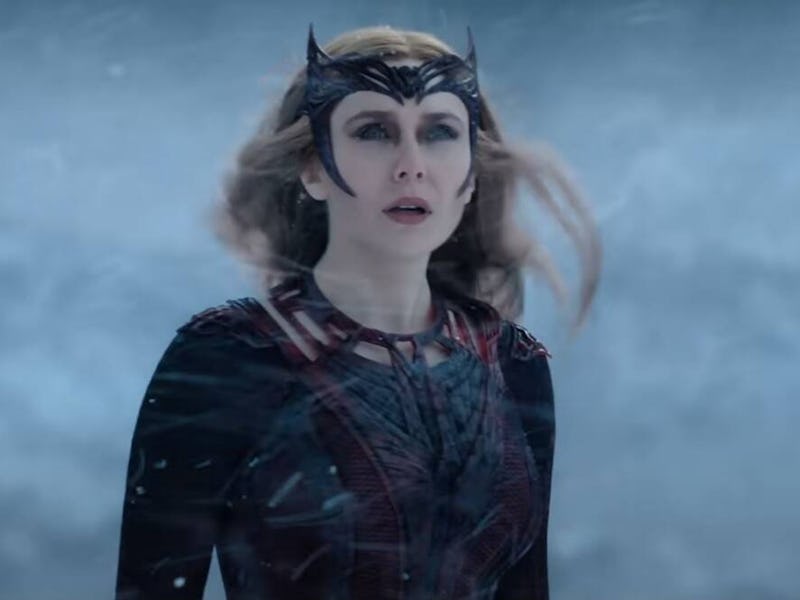Doctor Strange 2 finally disproves the MCU fandom's most annoying myth
When did movies become homework?

The Marvel Cinematic Universe is a franchise unlike any other. Its unprecedented size means the movies alone — not even the five Disney+ TV shows — will take you 50 hours to watch. Is that too much to expect from a viewer?
Doctor Strange in the Multiverse of Madness apparently answered that question with a resounding no. Critics tweeted out laundry lists of “required viewing” ranging from the entire last season of X-Men: The Animated Series to specific episodes of Agents of S.H.I.E.L.D. and What If...?. But one “assignment” was common: WandaVision. Apparently you needed to watch Wanda manifest and then lose her twin boys before seeing her quest to get them back.
But do you really need to study up for a Marvel movie? Here’s why the myth of “Marvel homework” is a poor way to digest media, and bad for our future expectations.
Context Clues
Do you really need to know who everyone in the Illuminati is to be in awe of them?
I dragged my partner, who is definitely not an MCU fan, to a sold-out screening of Doctor Strange in the Multiverse of Madness. I purposefully didn’t tell them about the plot of WandaVision, curious just how essential it was.
As the credits rolled, I expected them to be completely lost, but they understood every bit. Sure, the cameos weren’t as impactful, but Wanda’s motivation and sheer loss were communicated well enough to make the emotional moments still resonate.
In fact, Wanda’s position was probably clearer for them than me, who’d cried along with Wanda as she said goodbye to her kids. To me, Wanda was a woman and a mother who’d suffered to the point where she wasn’t about to let anything stand in her way. To my partner, she was a woman corrupted by an evil book. Much easier to root against.
Doctor Strange 2 wasn’t the WandaVision sequel everyone made it out to be. The latter provides context but is by no means necessary.
The Medium is the Message
WandaVision used the TV form to its advantage.
When WandaVision came out on Disney+ it was the first MCU-specific television show, which isn’t a task it took lightly. Over its nine episodes, it crafted a story as self-contained as Westview itself, all while paying homage to the classic TV shows that came before it, from The Dick Van Dyke Show to Modern Family.
Because of this, it avoided the flaw of the MCU shows that would follow it, like The Falcon and the Winter Soldier. Marvel TV shows often tend to become six hour movies with no sense of episodic storytelling.
The Marvel movies have the opposite problem. To Marvel fans, movies aren’t movies, but simply the next chapter in a grander MCU narrative, 30 lengthy episodes each furthering the story in its own way.
The Homework Myth
You can still get Mordo’s deal without his entire backstory.
But though it may seem otherwise, each and every Marvel project, from the first Iron Man to Doctor Strange in the Multiverse of Madness, can stand on its own. Every Marvel story has a beginning and an end, and it takes steps to refresh even the most seasoned fan’s memory. There’s an ongoing assumption that certain movies are “required viewing,” but that just isn’t true. Even if a movie is a direct sequel, it still works as a standalone story.
Saying that a new movie is “inaccessible” without watching previous works is at best misleading and at worst obnoxious. The whole point of the MCU is mass appeal, and the only way it can appeal to everyone is if it’s seen by even the newest fans. If someone doesn’t recognize Chiwetel Ejiofor as Mordo when he appears in Multiverse of Madness, Doctor Strange explains who he is to America Chavez. Every callback comes with an explanation.
Ultimately, do you really need to understand every reference? Do you need to cheer every time there’s a cameo? Not being entirely in on every joke doesn’t ruin these movies, and there’s no need to get so caught up in the interconnection between them that we can’t enjoy them as fully formed stories in their own right. So go ahead and check out Multiverse of Madness without doing your homework first.
Doctor Strange in the Multiverse of Madness is now playing in theaters.